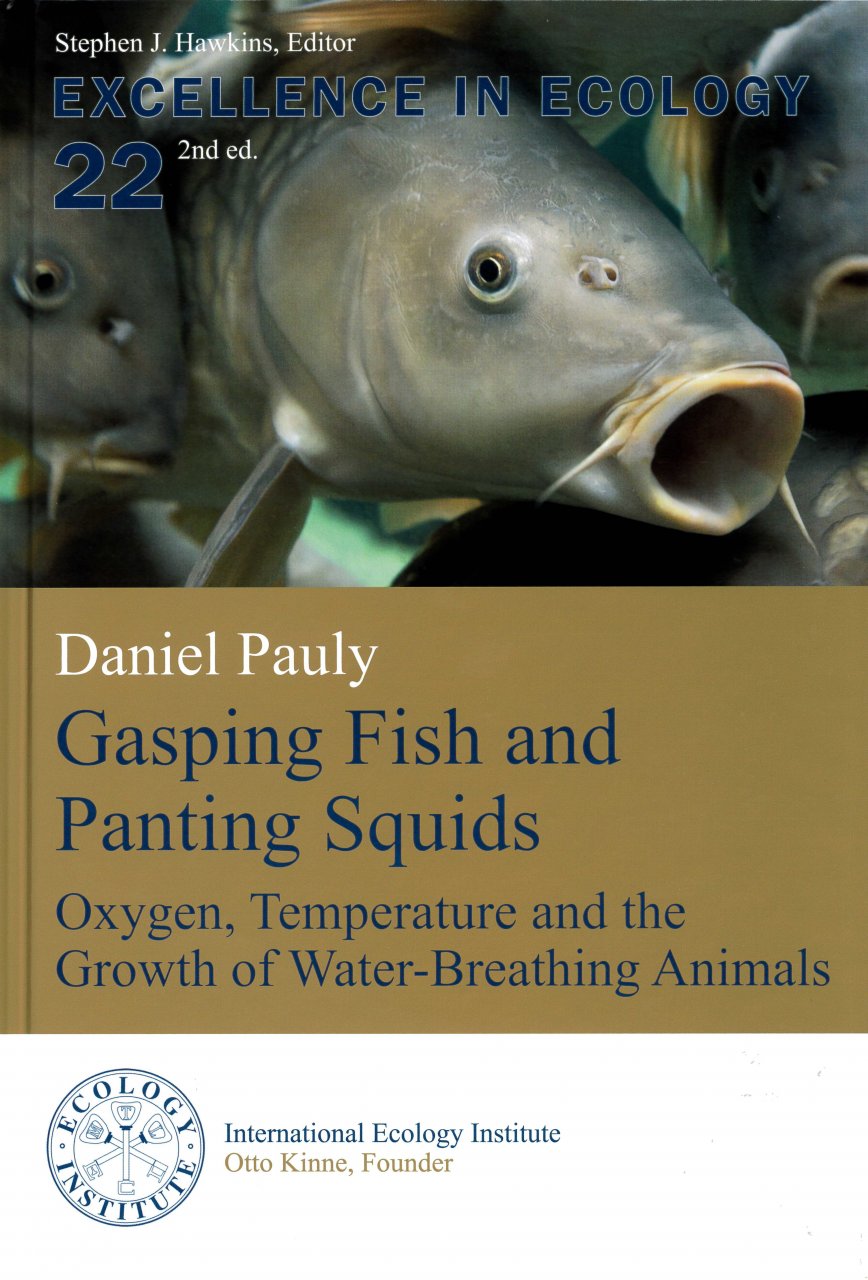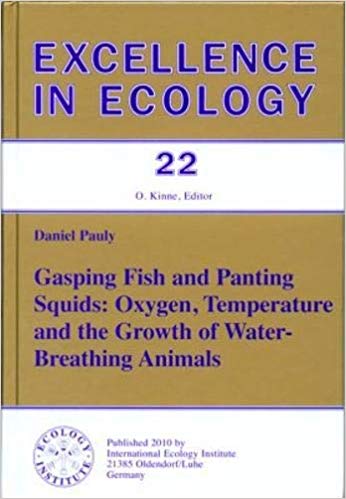For more than 40 years, Dr Daniel Pauly, principal investigator of the Sea Around Us initiative at the University of British Columbia’s Institute for the Oceans and Fisheries, has been collecting evidence to further develop his Gill-Oxygen Limitation Theory, also known as GOLT.
Back in 2010, he presented his findings in a slim book titled Gasping Fish and Panting Squids: Oxygen Temperature and the Growth of Water Breathing Animals, whose second edition has just been released; a Chinese edition will soon follow.
In the ‘new’ book, Pauly strengthens his arguments by incorporating even more evidence that leads to a widening of the applicability of his theory. From tiny gobies to large cod, he explains how the distribution and growth of water-breathing animals are largely determined by the difficulties of getting oxygen out of the water surrounding them.
“What happens is that the surface area of the gills — where oxygen is obtained — is two-dimensional and does not grow at the same pace as the rest of the body, which is three-dimensional,” Pauly explained. “As fish grow into adulthood their demand for oxygen increases because their body mass becomes larger but since the gills are not growing at the same pace, there is a point where they cannot supply enough oxygen for further growth.”
Throughout the book, the author makes use of basic physical laws and geometry rules and presents evidence-based counterarguments to respond to the criticism against the theory presented by some physiologists.
“The second edition is timely because, given our current climate change emergency, there is awakened interest in the GOLT,” Pauly said. “This theory provides a coherent explanation for the various ways fish and aquatic invertebrates are affected by the higher temperature and deoxygenation of their habitats.”
As an example of the usefulness of the theory in the context of warming waters, the researcher points out that it explains that fish become smaller because, as their medium heats up, their metabolism accelerates and they need more oxygen to sustain their body functions. However, since the gills are already growing at a slower pace than the rest of the body, they cannot supply enough oxygen to allow the fish to grow bigger.
Also, since warming waters contain less dissolved oxygen and since accelerated metabolism demands more oxygen, fish tend to move poleward, to waters whose temperatures resemble those of their original habitats and that satisfy their oxygen needs.
“Fish shrinking and moving to different areas has great implications for global fisheries and their management,” Pauly said. “This is why it was so important to update and further substantiate the GOLT.”
The second edition of Gasping Fish and Panting Squids: Oxygen Temperature and the Growth of Water Breathing Animals is number 22 of the Excellence in Ecology series published by the International Ecology Institute.
About the author:
Daniel Pauly, who is both French and Canadian, studied fisheries science in Germany and spent much of his career in the tropics, notably in the Philippines. Since 1994, he is a Professor of Fisheries at the University of British Columbia, Vancouver, Canada, where he directs the Sea Around Us initiative, initially funded by the Pew Charitable Trusts, and since 2014 by a variety of foundations, and which is devoted to studying, documenting and mitigating the impact of fisheries on the world’s marine ecosystems. The concepts, methods and software he (co-)developed are documented in over 1000 widely-cited publications and have led to his receiving multiple scientific awards.




